Over the years I’ve seen my share of horribly built above ground swimming pools. Many of them were severely misshaped, all their uprights leaned to the side and the resin connectors were cracked and did not hide the screws. The biggest way to mess up an above ground pool installation, though, is for it not to be level.
The most “off level” an above ground can get is around three to four inches off. This means when the pool is filled, on the one side the pool structure is three or four inches higher above the waterline than on the other side. Chief Obvious nature fact: Water is always level with the earth. Since water can only be level, an “off level” swimming pool will look really bad when you fill it.
I don’t usually see above ground pools that are off more than four inches, because they will almost always cave in when the level is off by more than that. Most above ground installation manuals will say that a pool should be level within an inch, but I try to get it level to an eighth of an inch or so. Above grounds with liners that have patterns or tile lines will start to look “off level” at about the half inch mark as the naked eye can compare the level pool waterline against the pattern of the liner.
How an Above Ground Pool Is Leveled
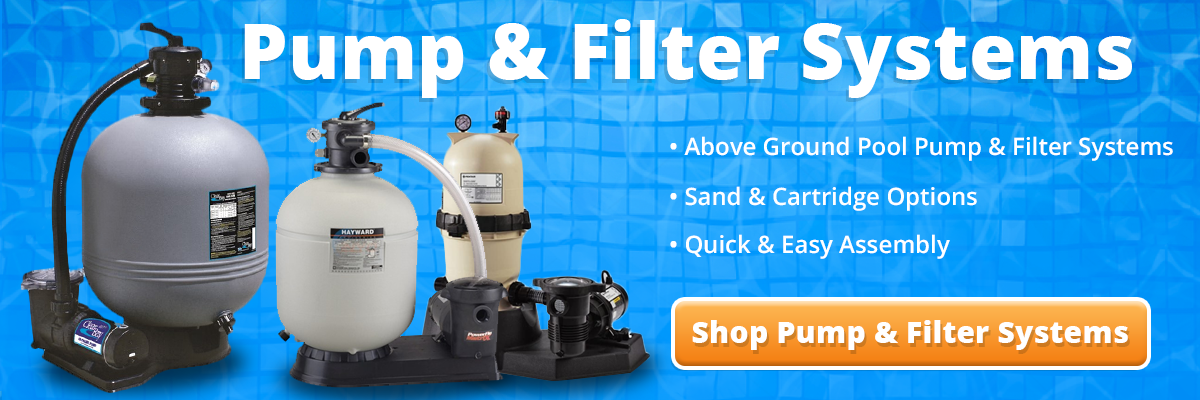
Traditional above ground swimming pools are leveled at their bottom track. This is the track that the pool’s wall fits into. So, if the track is level, then so is the wall. Most do-it-yourselfers will go on YouTube and find that most videos show how to level the entire bottom area of the pool. They will show this using some makeshift long leveling tool made from two-by-four wood nailed together according to the length needed to span the radius of the pool’s size. They then tape a two or four-foot level to the wood so they know when it’s level and attach one end to a piece of wood that’s hammered into the earth at the very middle of where the pool is going. At that point the long two-by-four wood can swivel in 360 degrees from the center pivot point and can be used to level the earth.
This leveling method does work to level the earth, but it is time-consuming and ultimately not very accurate in leveling what’s really important to level which is the bottom track. The bottom of an above ground pool doesn’t have to be level. Some will “dish out” the bottom of their pool so it is gradually deeper in the very center and that’s cool as it may make it easier to maintain the pool later on.
The reality is that it is much more important for the pool’s bottom to be smooth instead of level. The above-mentioned long two-by-four leveling method does very little at making the pool bottom smooth as the smoothing is done later on after the wall is up and the bottom coving is built or installed.
Leveling the Pool’s Bottom Track
When I started building above grounds in the eighties, we didn’t use blocks for leveling. We would just level the earth and lay the track down and roll out the wall. The result was some of those pools were pretty “off level”. Today every pool installer uses some kind of blocks for leveling the track and we place a block under every one of the bottom track connectors. I’ve seen people use all kinds of things for leveling blocks from cutting pieces of small pressure treated wood (not recommended) all the way to full 8”x8”x16”concrete blocks buried (also not recommended). Most do-it-yourselfers use too big of a block for this as they think the blocks have some structural value and they don’t. I use 6”x6” standard thickness square pavers.
CAUTION: SIDE RANT AHEAD
When I explain that the blocks under the track have no structural value, some homeowners look at me sideways and don’t believe or agree with me on this. If you work 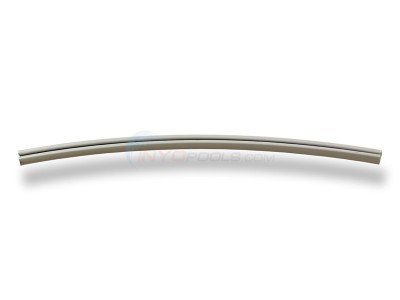 in computer science or are an engineer of some kind, chances are you won’t agree with me as these two professions must attract the overly intellectually arrogant. In this case, it doesn’t matter if you are wrong, as it won’t hurt anything to overbuild. You can spend your whole week digging and leveling giant unnecessary pieces of concrete materials. I’m sure your body needs the exertion and your soul will enjoy being outside for a change. Certainly there is value in everything we do.
in computer science or are an engineer of some kind, chances are you won’t agree with me as these two professions must attract the overly intellectually arrogant. In this case, it doesn’t matter if you are wrong, as it won’t hurt anything to overbuild. You can spend your whole week digging and leveling giant unnecessary pieces of concrete materials. I’m sure your body needs the exertion and your soul will enjoy being outside for a change. Certainly there is value in everything we do.
Anyway, when leveling the blocks under the track, people do it in two ways. Most will lay down the pool’s bottom track, shape it and somehow mark where the connectors are and then take the track out of the way so they can level the blocks. Some will keep the track in place and level the blocks underneath. This is tricky as the track will get in the way of leveling the blocks. The latter is the method I use.
What to Use to Level the Blocks
Most people will use a four-foot level and starting with the first block, will level from block to block all the way around until all blocks are the same level. This is hard to do as the distance between the track connectors (which is where the blocks go) is more than four feet long. To make up the difference, some will tape their level to a five foot 2×4 so it will reach from block to block.
Personally, if I were using a four-foot level to level the blocks, I would leave the track in place and put the level on top of the track. This will allow you to level farther than the four-foot length of the level as the track covers the longer distance from connector to connector. This is also more accurate as you are now leveling the actual track and not just the blocks. Confused yet? Sorry. This will make more sense when you are doing it instead of just reading about it.
The Ultimate Leveling Tool
Years ago I used a four-foot level to level pool tracks, but eventually graduated to using a builder’s level instead. Hand levels work well, but the drawback is you are leveling from block to block which means you are using a different point of reference every time. This can result in the blocks not being all the same level. You’ll know how level or off you are when you finally level that last block with the original first block you started with. Often the blocks will be off and will have to be redone using this method.
A builder’s level or transit uses the same point of level reference every time. This means the blocks will all be the same level the first time. It does take two people to do this, though, as one has to look through the level while another is leveling. You could rent a 360-degree laser level and do it on your own if you don’t have any good friends.
In conclusion, just remember that it’s the bottom track that has to be level and not the ground inside the pool. Get that bottom track level and the right shape and the whole pool will look good and last longer no matter how bad the pool’s bottom looks or feels.

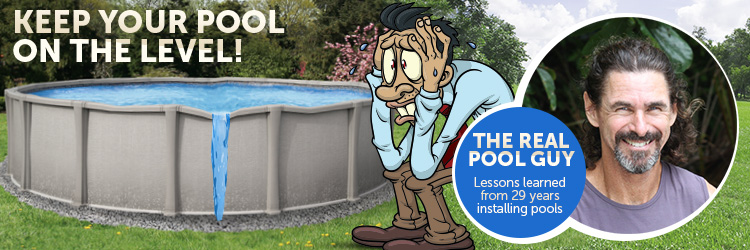
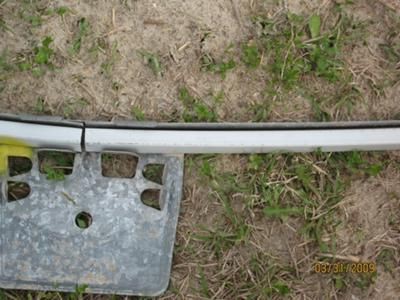
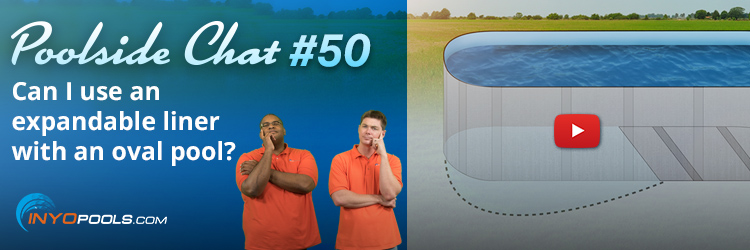
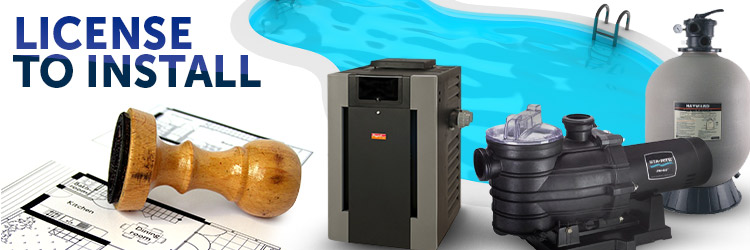

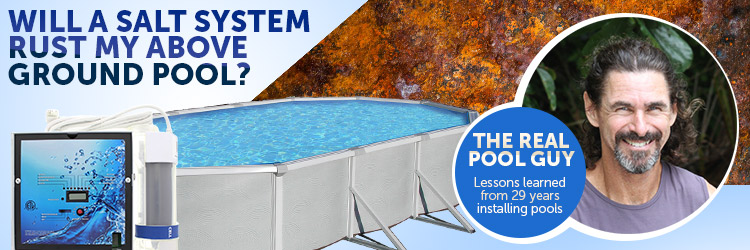






FYI, folks: This isn’t the place for questions about Intex and similar “soft-sided pools”. The author has already said that despite many years of experience even he can’t get these pools to sit level.
I was about to take the plunge on an Index 24’x52 rectangular pool but now I have thought better of it having read this piece and also knowing that my yard is on a slope (and a sandy one that tends toward erosion at that). I don’t think I could count on the ground not shifting due to it being too soft (loamy). Even without an existing above-ground pool in my yard, I have already observed some areas sink quite a bit just from being exposed to the garden hose. (I live in a desert where sand is more common than grassy lawns). So my FIRST question for the author is this: Are there some soil conditions and/or sloped yards that really are not suited toward any kind of DIY above-ground pool use?
Although I have been deterred from buying a soft-sided pool by what I have read here in the comment section, I will pass on what I learned for the benefit of those many repeated inquiries about such pools. Having just read the “top five mistakes when installing an above-ground pool”, going overkill on sand was one of the mistakes indicated. Another tip I picked up pertains to the use of pavers: it is advised to set the top of the pavers level with the ground you have leveled (inset). In other words, it’s not enough to simply make sure your pavers are level relative to each other — you don’t want to jack up the support legs because over time the top liner can rip loose. (This is also why you want your entire pool area level for soft-sided installation as opposed to the “dish” or “bowl” impression under the liner that the author mentions.) Finally, I wouldn’t used crushed rock beneath your pool because it will force you to over-apply sand (the first mistake I mentioned).
As those of you who have read these comments closely may have noticed, the author says numerous times that the soft-sided pools are poorly designed and “cheap”. Well, they aren’t particularly inexpensive anymore. A 24’x52″ Intex here at the end of the 2020 season can run up to $4,000. A couple hundred bucks? No.
So the question I have for the author, in conclusion: If the large rectangular soft-sided pools have hit $1,800-$4,000 what is the cost of a better designed above-ground pool with a better warranty — say 10 years? And what brands have the best quality for the lowest price?
Dan, we are filling our 24’ round and noticed that one side is filling faster (water is currently about 3-4” higher on this side) Is there a safe way to lower the high side with draining and starting over? We do have 6x8x2” pavers underneath the uprights. Was considering digging out under the rails/blocks of the high side, or trying to water down this side to see if it might sink slightly. Thanks in advance for any advice
cut a 2×4 at length that will sit just under top frame of pool, get your hydrolic floor jack, and get something solid underneath so it does not sink in ground, place 2×4 uner t- connector on top metal frame, using a line lel , lift the pool upthen place some wwood block under the pool leg . do this around pool until pool is level enough, i had my summer waves pool leveled like this for over 4 years, any questions, davehathaway101@gmail.com
Good article. Tks. I will be putting up 24 round 54 inche above ground pool. I live in Hard Clay soil area (Fargo, ND area). For added stability, thinking of laying down heavy duty landscaping fabric I have in the whole area once ABase layer is done (which is a mix of gravel and clay that I will use packer on). So Pool supports will end up sitting still on levelled patio blocks but will be landscaping fabric layer between supports and patio blocks. My outer ring will be packed down and within 1/2 inch of level all around. So my question is if landscaping fabric is a good idea to use in this way? Fabric is 12 feet wide so two pieces of roughly 14 feet long will be laid down before setting the bottom pool ring .
I just put up a 16ft x 48in pool. Filled it up and it is off level by about 2 1/2 inches? Will it be ok to leave it like that?
It sounds like some of you are in a similar situation to ours–kids at home, pools are closed because of Covid. Perhaps, like us, you’re doing something you never thought you’d do just to make the summer more bearable–buy an Intex pool! I know these are not the greatest above-ground pools, but we’re doing it out of some desperation and doing the best we can with it. We’re trying to level a graded–about 3″–driveway area. We’re going to use concrete pavers under the whole pool, including legs, level the top with sand, then cover with a tarp and a pool pad. If anyone has any comments or suggestions, they would be helpful. The above comments and suggestions have been very helpful already. Thank you!
I am in Michigan with nasty freeze/thaw cycles. I’ve read that using patio blocks under bottom connectors will lead to a ripped liner. The patio blocks heave during the thaw and eventually tear the liner. They suggest installing on level virgin ground. Any thoughts on this. Thanks.
Great article! Spot on! I am just working on my pool in Poland and found it very informative. Thank you.
Dan,
The article talks about the pool being slightly deeper in the center. How much deeper is the article talking about?
I’m installing an intex 12’x24′ AGP and my yard slopes slightly to where the middle of the pool will be. It is level at the long and short side edges where the supports will be.
Does this sound okay? It’s roughly 3-4″ sloped from the exterior to the middle.
Thanks – Chris
Kind of a random place to leave it but wanted to thank you for your honest opinions and guidance based on the decades of XP. I’m one of those unwashed Intex masses over here but still appreciate that you’re trying to apply proper guidance with necessary caveats in regards to these pains in the ass.
Here’s a random one for you.. Have you ever walled in an intex pool for a more pleasing aesthetic and maybe even to allow the use of coving or other parts to make a more complete feeling pool? Fools errand or interesting weekend project? Thanks!
We are putting in a 32′ X 16′ X 52″ rectangular pool. It doesn’t have the bottom tracks but instead has 8 support legs on the long sides and 4 support legs on the short sides. Do I level these similar to the bottom tracks that I normally see on round pools. We had a bobcat service come in and do the initial leveling but once we got the pool up and started to run water to check the level we noticed that it ran down to one corner. We have now taken down the pool and are checking the level with the 2X8 with a 6 foot level attached to it. Looking for advice!
Can I put a concert slab down for my above ground pool, will it be ok
Hi Dan,
We have a large cement with flagstone patio that easily fits a 12×24 pool. The patio has a slight pitch for water run off. Can we use foam Matt’s to level this patio out or do you recommend something else?
Thanks
Jason
Did you find a solution? I am dealing with the same issue. Thank you-
Hi Dan
We had a tree fall on our Gibraltar pool, we hired Gibraltar to do the repair (What a Monopoly) … They ripped us off.
The tree bent the top extruded aluminum rails, we paid for new ones with the new decks, they did not install them, they just stuck the new decks on the bent top rails, chopped up the new rails for scrap, of course it failed after a couple years.
We are now fixing it ourselves, we bought a damaged pool for parts.
The last time we had a liner installed they added a little more sand to smooth out the bottom, we believe they just used beach sand because we got invaded by bugs (mostly ants) under the pool causing divots and what not, not to mention sticks and stones.
We have removed all sand … Re-Leveled and shaped the whole location, the wall base is on natural compacted earth.
Our question is:
Mason Sand (Pool sand) or Stone dust under the liner …
Stone Dust under the liner was recommended stating the bugs won’t make their home in it.
We can find no reference that states stone dust is acceptable as a liner base.
We are in the North East.
Thank you
I am putting up a 15×52 round Alpha pool on concrete, I have built a frame for the pool due to my yard having a downward slope, the sand has been added , my questions is do I level the sand before and after I put the walls up and what type of level can I use since Home Depot does not rent laser levels. Is stone dust or paver blocks the best way to go for the legs to rest on?
What a great article. We are installing a 24′ round pool and have gotten so many different opinions on how to do it. We have clay soil and are on a slope. We cleared a flat spot and contoured the area to take rain away from the pool. Then we hired someone to put in a French drain uphill around the back of the pool. He filled the French drain with 57 stone and lay down geotextile fabric. Now he is building a level and compacted layer of 57 stone for he entire pool pad. He said it will be hard enough to put a house on! He said there is no point in the patio blocks under the uprights, and he seems to think we can put the pool right on the compacted 57 stone. He doesn’t want to put stone dust or sand near the French drain to avoid cllogging it. Can we set the pool directly on compacted stone with no patio blocks under the uprights??? Something needs to stop the sand under the liner from filtering it’s way down into the stone over time. Maybe one of those gorilla pads on the stone but under the sand? Or we could put up the pool walls on the stone layer and put/compact crusher dust inside the pool only before the sand layer??? What do you think? Would like to get it right the first time. Thanks.
I forgot to put that we live in the South and the pool is a Blue Wave with a vinyl track. Thanks for any ideas you may have, I hope you have a great 4th of July.
So I purchase an Intex rectangle pool 32×16 and we got the ground level had to rent a backhoe because of the slope in the backyard and got 10 yards of sand to put on top of the ground to prevent rocks from hitting the liner. Got cement pavers to put under each side post of the pool will only having sand under the pool hold the pool up ?
Will the sand level some rust under the inner pool floor? Or do I need to get them out before putting foam and sand? Thank you!
Ruts, not rust.
I have a 15 by 48 intex above ground pool were we live there use to be a garage and now theres ony the concrete floor but it not level can I level my pool on one side with sand to level it and put somthing under 3 or 4 legs
I have had a hard time getting my pool level. It seems to be about 3-4 inches off. I have mortar sand in the place where I want pool. I have a 14 foot summer waves elite pool with legs for support and no bottom track. Do you have any suggestions to level this pool. Thanks in advance.
Those pools are cheap and poorly designed. The way I do it is to level the entire area as best I can using a laser level, and then assemble the pool. Even with my thousand years of experience leveling, I can be off more than an inch. There’s only so much lipstick you can put on for a pool that just a couple hundred dollars.
Curious where do you start your leveling at? To clarify my question my yard has a slope of about 4” inches higher on one end of my pool then the lowest point. Do I start my leveling at the lowest point? Also as I level in this case how should I level the middle of the pool since I’m going to have to either add or remove some dirt?
I tried using sand last year but for obvious reason it was to unstable and didn’t have the desired effect. Later reflecting I kicked my self for doing so.
I aim to clarify my hasty mistakes last year and do it right this year is my goal. I want our pool to last but also for it look respectable instead of some lazy quick thing. So I’m taking the time and pride to do it right this year is my goal and hence my questions.
Thanks
This depends on the type of above ground you have. With an Intex type, I really don’t have much advice since the design is poor. For a metal walled type, getting the bottom track level and the correct shape is the most important thing. After that, you can use the level bottom track as a reference for getting the inside pool bottom level. And I don’t worry about starting from the low point of the site. I just level the entire area. Most of the time, I’m moving earth from the high points to the low points for make level.